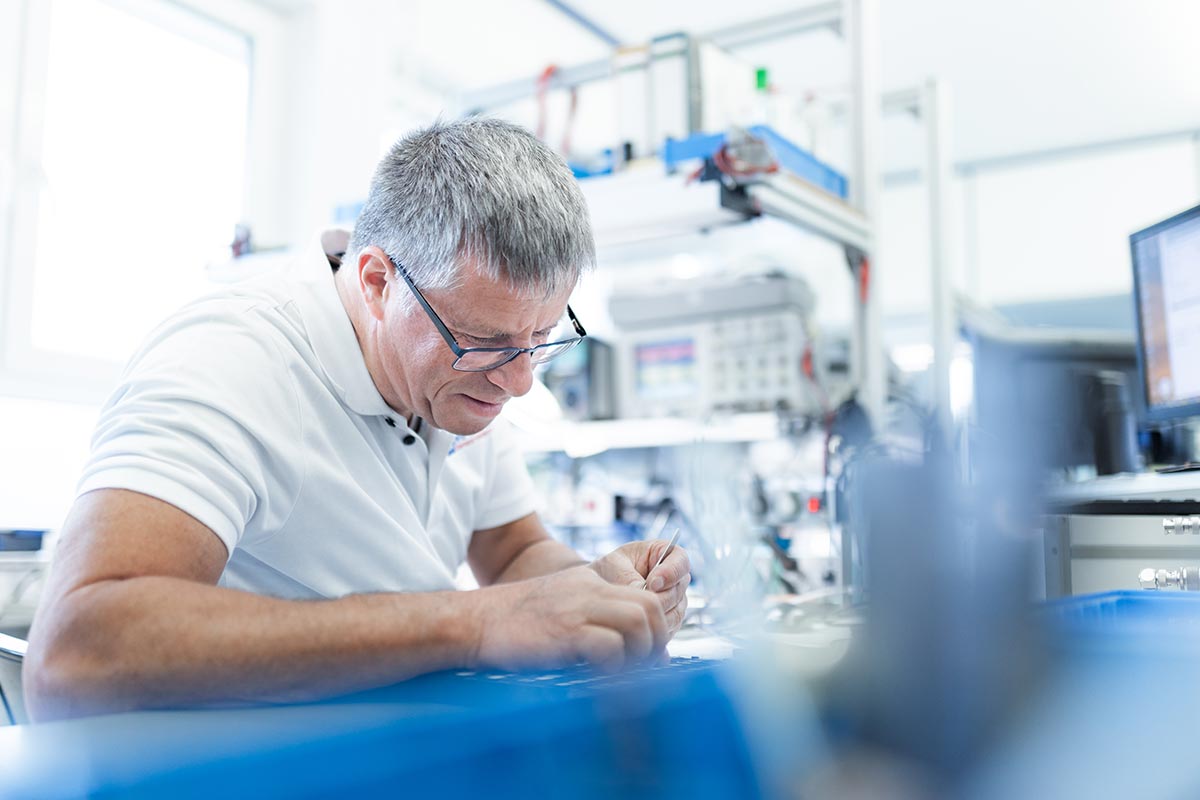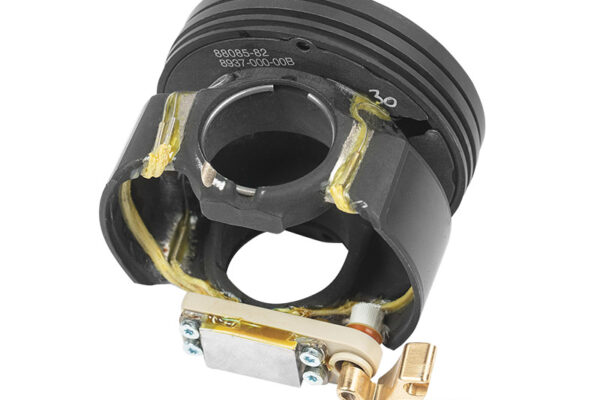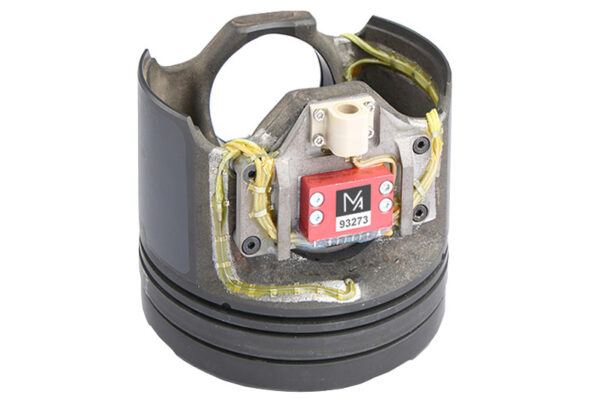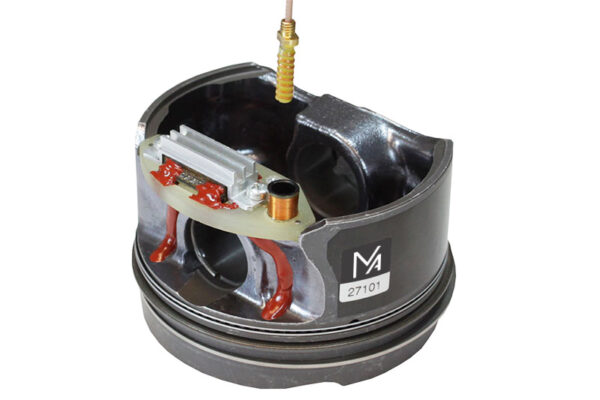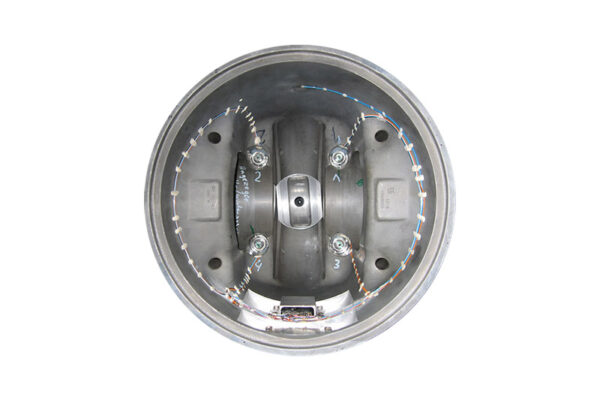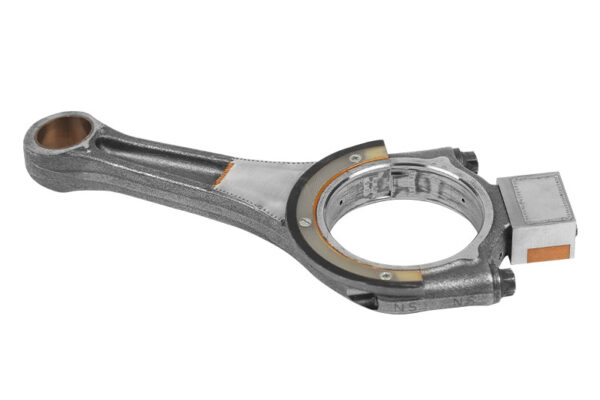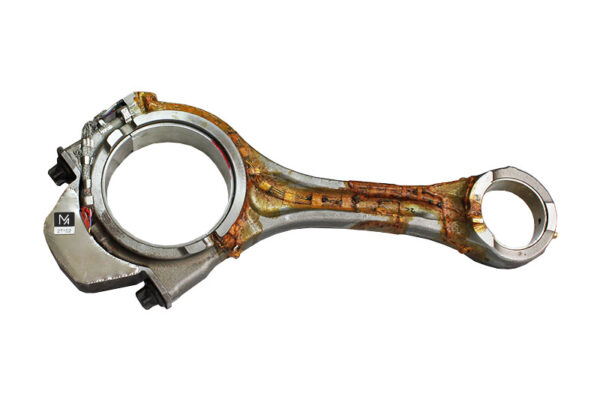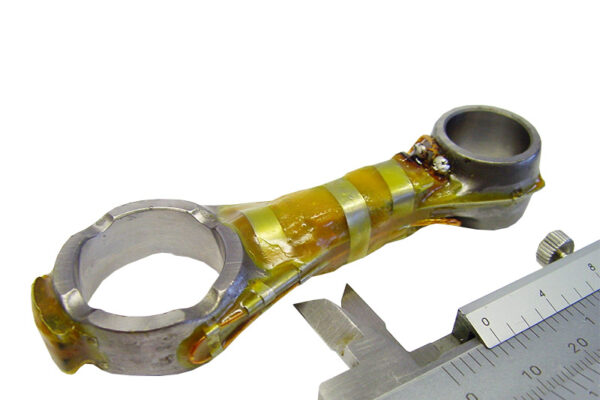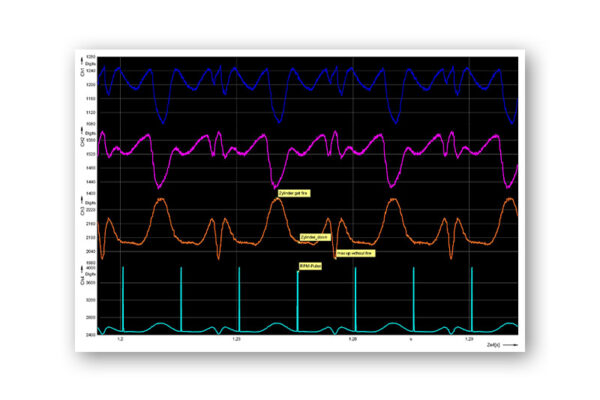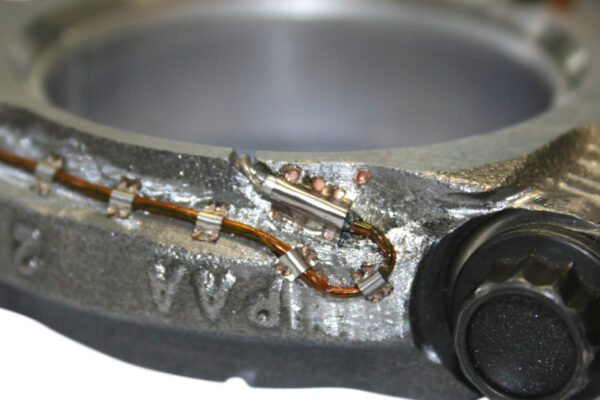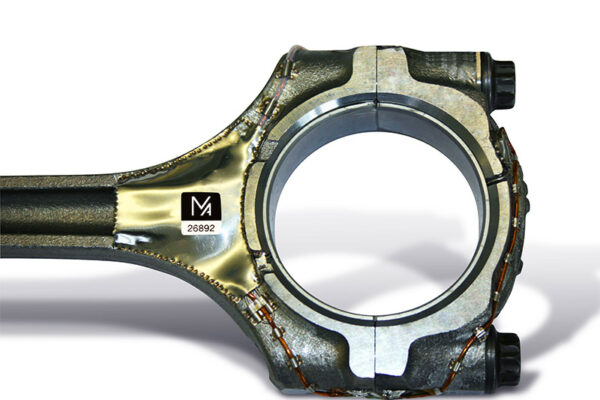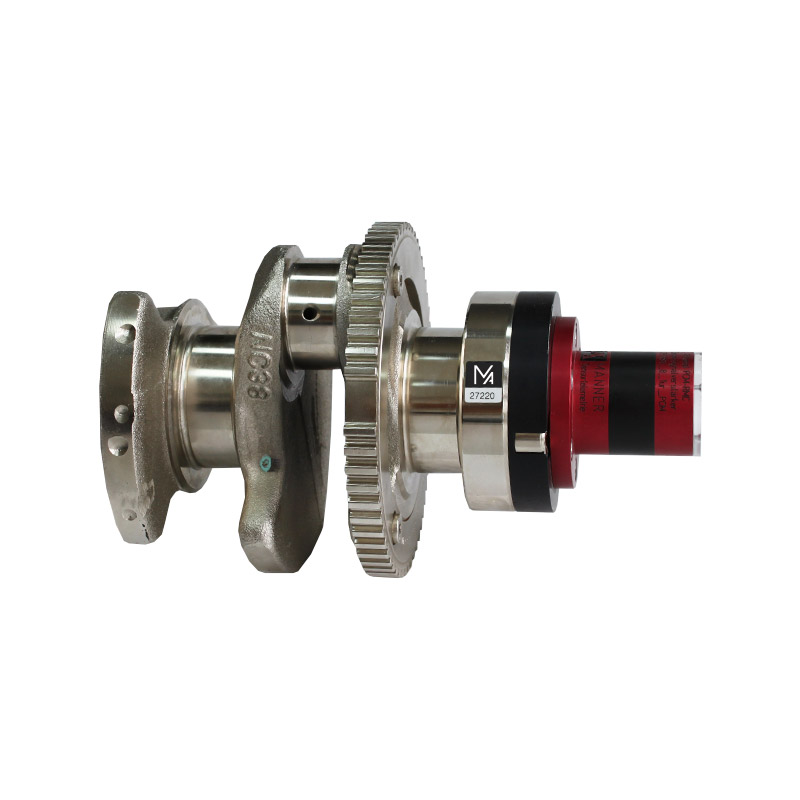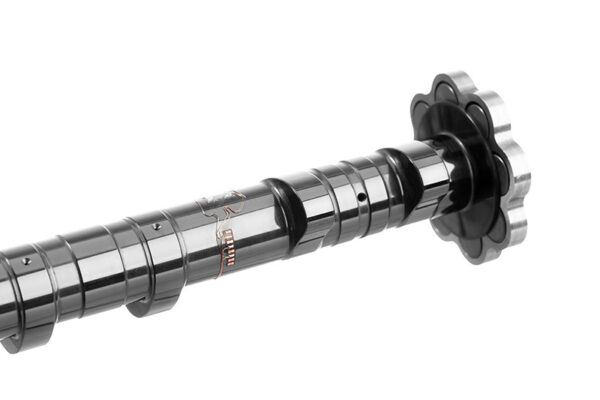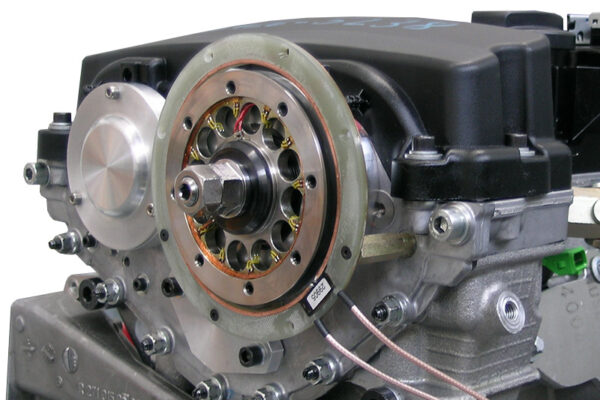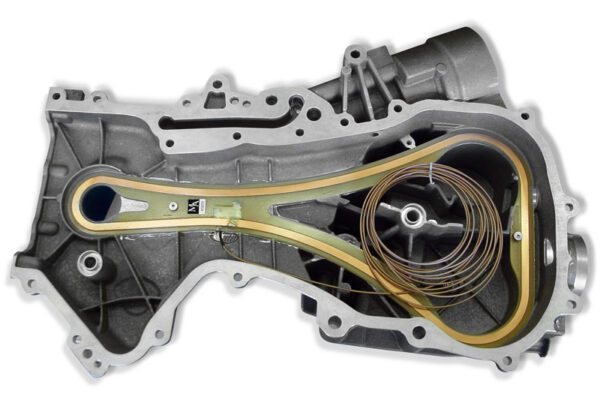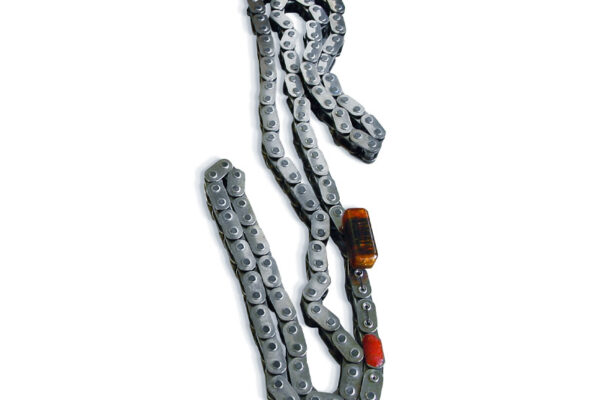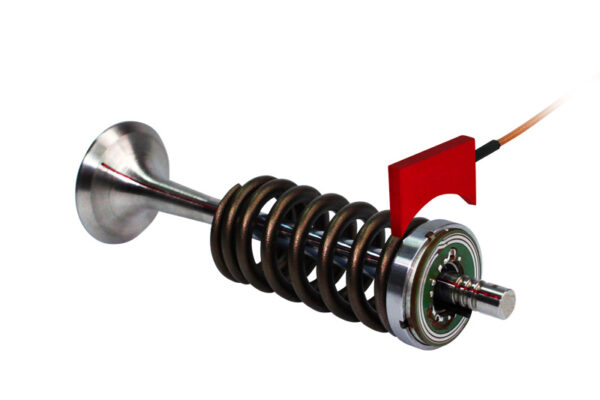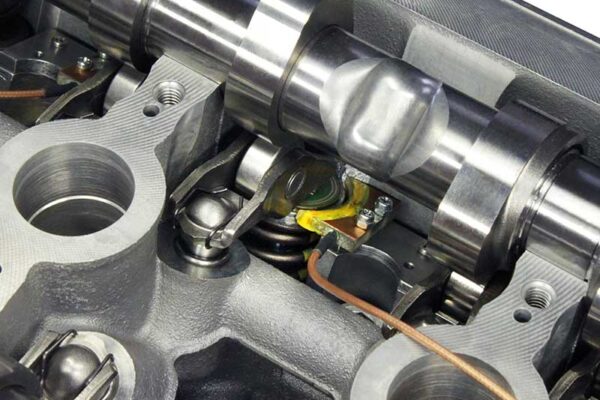The control chain as drive element of the camshaft is responsible for the exact adherence to the timing. Slide rails and chain tensioners compensate for the extension of the chain that occurs during operation.
Of great importance is the tensile force which must be applied to overcome the resistance of the camshaft. The load after the camshaft drive is also of decisive importance, since here a poor chain tension leads to fluttering, in extreme cases to a chain break.
This is already precisely measured and recorded in many applications with the help of MANNER sensor telemetry. With the help of our chain telemetry, exact voltage measured values of individual chain links can be transmitted without contact via an inductive coupling. Even excessively high or one-sided tensile and centrifugal forces can be determined precisely and preventively in this way.
Optimize your motor control and meet the decisive requirements of the control chain with regard to low noise, control precision and longevity. MANNER Sensortelemetrie GmbH will be pleased to develop the optimum application for your measuring task.

